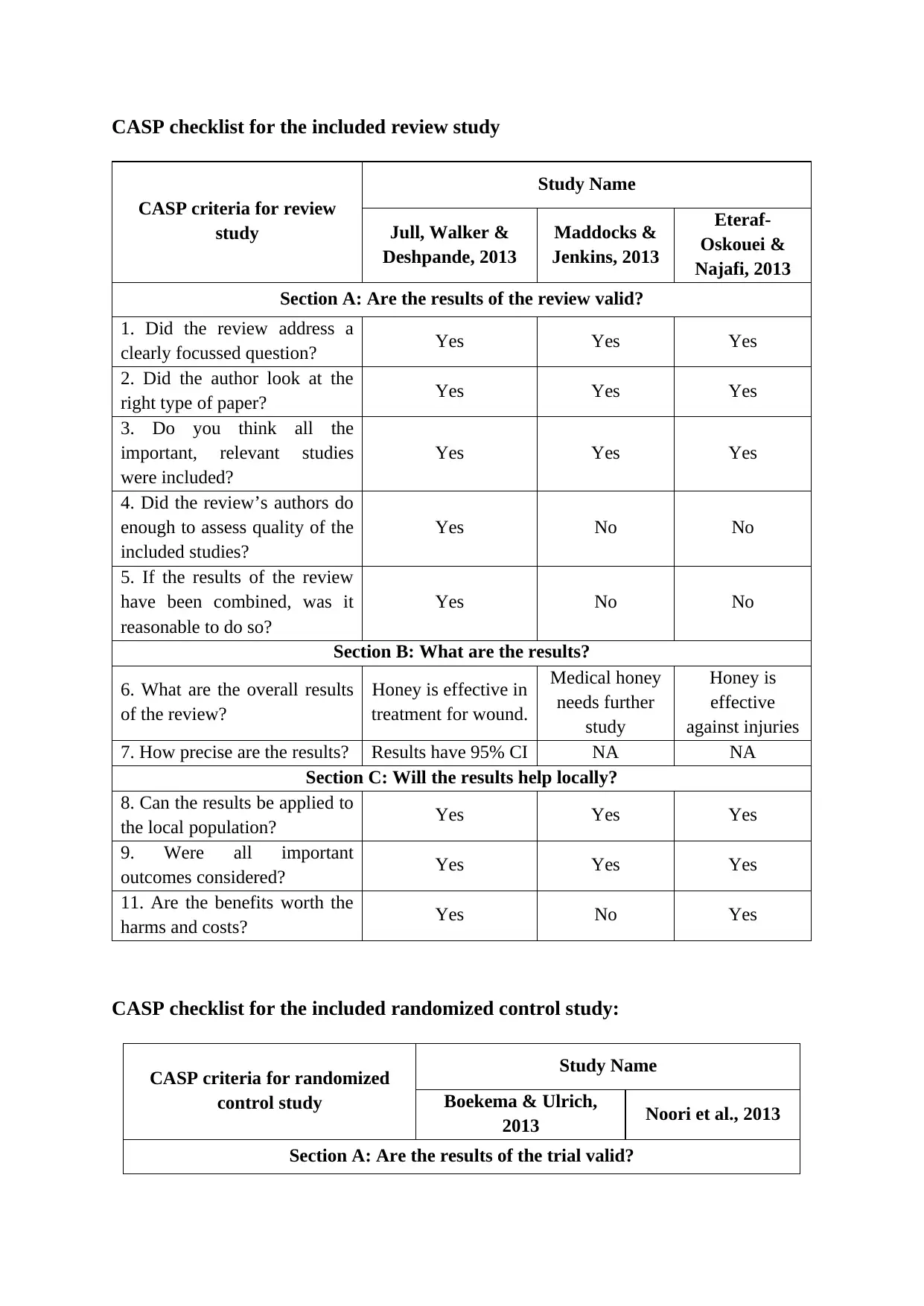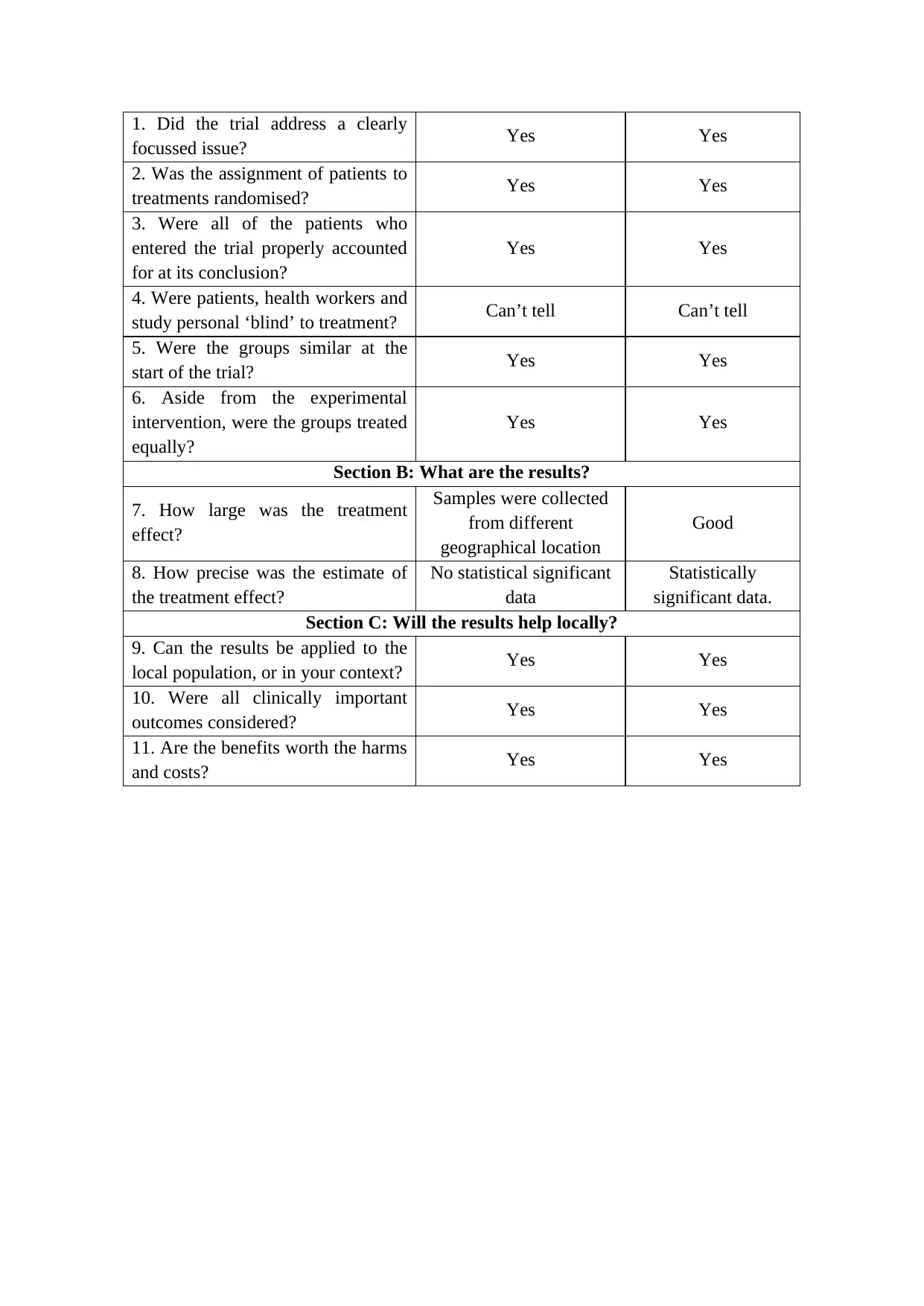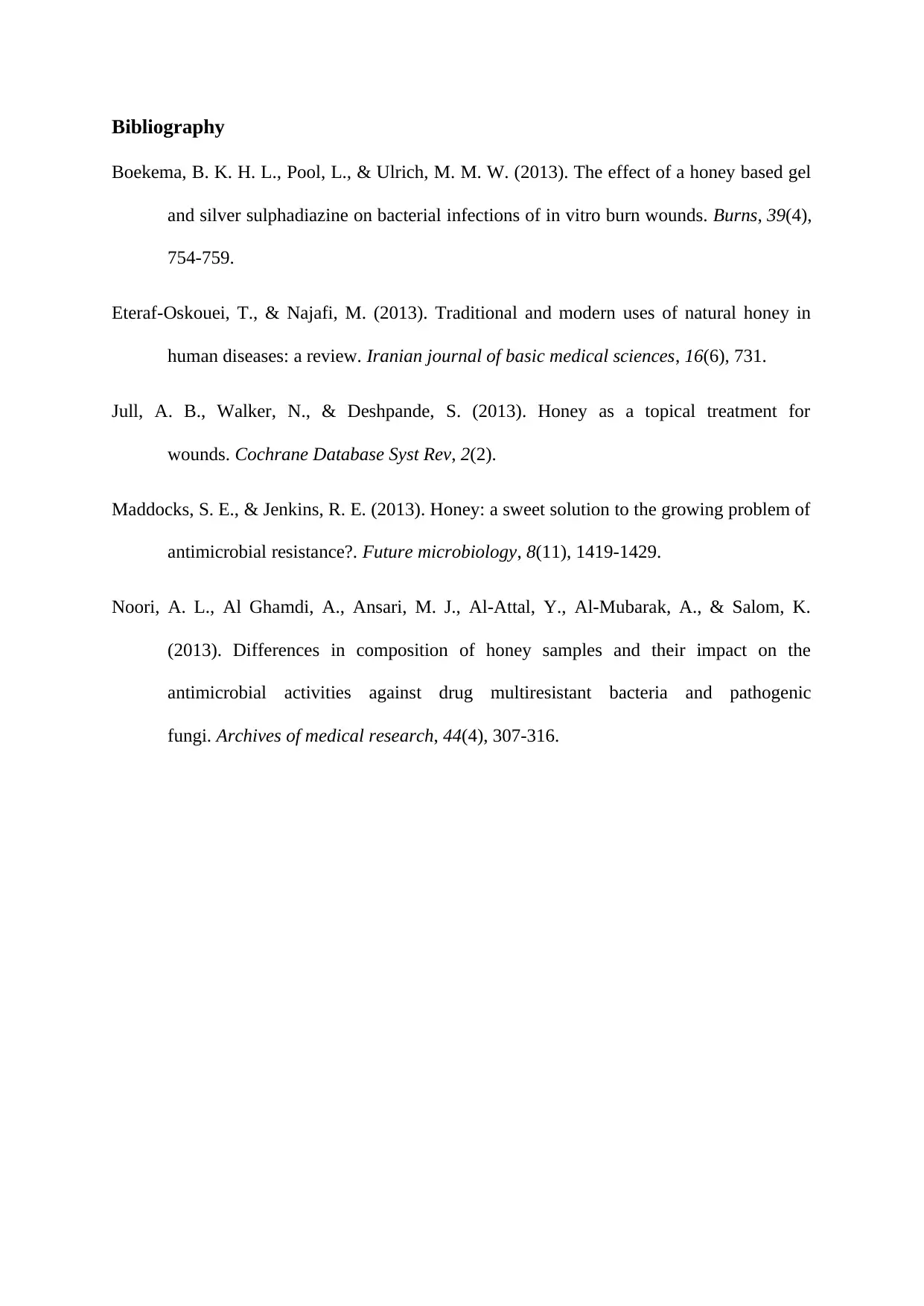Evaluating Honey for Wound Treatment: A Critical Appraisal using CASP
VerifiedAdded on 2021/10/30
|3
|697
|189
Report
AI Summary
This report presents a critical appraisal of using honey for wound treatment, employing CASP (Critical Appraisal Skills Programme) checklists for both review studies and randomized controlled trials (RCTs). The analysis includes evaluations of studies by Jull, Walker & Deshpande (2013), Maddocks & Jenkins (2013), and Eteraf-Oskouei & Najafi (2013) for review studies, and Boekema & Ulrich (2013) and Noori et al. (2013) for RCTs. The CASP checklists assess the validity, results, and applicability of these studies, focusing on factors such as clear research questions, appropriate study types, inclusion of relevant studies, quality assessment, and the reasonableness of combining results. The report highlights the effectiveness of honey in wound treatment, the precision of results, and the potential benefits versus harms and costs, providing a structured evaluation of the evidence supporting honey's use in wound care. Desklib is your go-to platform for accessing similar solved assignments and study resources.
1 out of 3








![[object Object]](/_next/static/media/star-bottom.7253800d.svg)